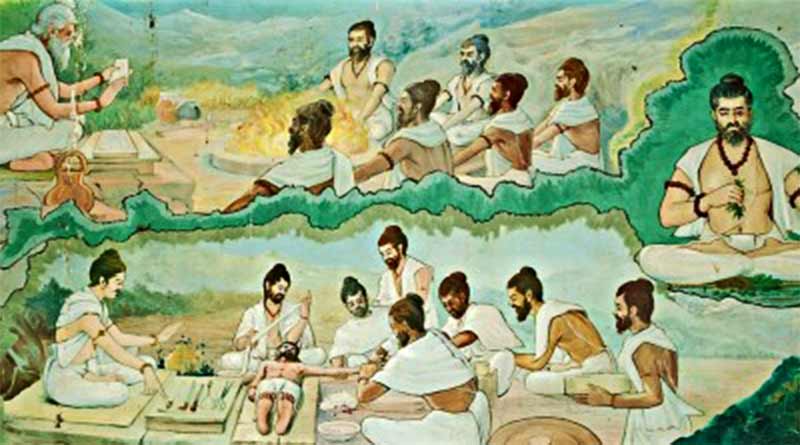The Joint Entrance Examination (JEE) serves as the gateway to numerous engineering colleges across India, comprising two distinct assessments: JEE Main and JEE Advanced.
Administered by the Joint Seat Allocation Authority (JoSAA), the joint admission process encompasses 23 Indian Institute of Technology (IIT) campuses, 31 National Institute of Technology (NIT) campuses, 25 Indian Institute of Information Technology (IIIT) campuses, and 19 other Government Funded Technical Institutes (GFTIs). Admission to these institutions is determined by a student’s rank in both JEE Main and JEE Advanced.
JEE Full Form
JEE, or Joint Entrance Examination, is an imperative gateway for admission into NITs, IITs, and CFTI colleges. This examination stands as a crucial means of securing admission to various engineering colleges across India. Without clearing the JEE entrance exam, admission to any engineering college within the country is unattainable. The JEE examination is divided into two segments: JEE Main and Advanced.
JEE Main
The National Testing Agency (NTA) oversees the administration of JEE Main, comprising two papers: Paper-I and Paper-II. Candidates have the flexibility to opt for either or both papers. Both papers feature multiple-choice questions. Paper-I, conducted in Computer Based Test Mode, is designed for admission to B.E./B.Tech courses. Paper-II, also conducted in computer-based test mode, is tailored for B.Arch and B.Planning courses, except for the ‘Drawing Test,’ which is conducted offline. An additional Paper-III has been introduced exclusively for B.Planning courses since January 2020.
In response to the COVID-19 pandemic, modifications were made to the paper format and the number of attempts for JEE Main 2021. The exam now includes 20 single-choice questions and 10 numerical questions, with only five numerical questions attempted. The marking scheme remains consistent: +4 marks for correct answers to single-choice questions, -1 mark for incorrect responses, and 0 marks for unanswered questions. For numerical type questions, +4 marks are awarded for correct answers and 0 marks for incorrect responses.
Unlike JEE Advanced, the JEE Main exam maintains a fixed structure and is not subject to annual alterations. As of 2018, JEE Exam Paper-1 extends over three hours and encompasses thirty single-choice questions in each of the three subjects: Physics, Chemistry, and Mathematics. Correct answers are awarded 4 marks, with 1 mark deducted for incorrect responses. Typically, candidates taking this test fall within the age bracket of 18-20 years.
A revised pattern introduced by NTA in January 2020 features 20+5 questions per subject, comprising 20 single-choice questions and 5 numerical type questions. Correct responses to single-choice questions are rewarded with 4 marks, while no marks are deducted for numerical type questions.
From 2013 to 2016, Class XII school board exam scores held a 40% weightage in determining the JEE Main All India Rank.
JEE Advanced
JEE Advanced serves as the gateway to 23 IITs and prestigious universities such as IISc Bangalore and IIST Thiruvananthapuram. Conducted annually by one of the IITs, the exam was administered by IIT Delhi in 2020, with subsequent administrations planned by IIT Kharagpur, IIT Bombay, and IIT Guwahati in 2021, 2022, and 2023, respectively.
Each year, over 2 lakh students qualify for the JEE Advanced exam, with eligibility granted to those who pass the JEE-Main exam. In 2018, 224,000 students were eligible to sit for JEE Advanced, a figure that stood at 220,000 in 2017 and 200,000 in 2016.
The Importance of The JEE Exam
Annually, numerous students clear their 10+2 examinations, aspiring to secure admission in reputable institutes. These institutes employ the JEE exam to select the most exceptional candidates, consequently raising the academic standards. The primary objective of this exam is to identify the most promising students among the aspirants.
JEE Exam Pattern
The JEE Main exam is specifically designed for students aspiring to enroll in prestigious institutions such as the National Institute of Technology and the Indian Institute of Information Technology for courses like BE and B Tech. Subsequent success in the JEE Main exam necessitates sitting for the JEE Advanced exam, providing an opportunity to study at an IIT.
JEE Main exam comprises Paper 1 and Paper 2. Paper 1 caters to students seeking admission in BE and B.Tech courses, while Paper 2 targets students pursuing B.Planning and B.Arch courses. Candidates must specify their preferred papers for examination, indicating whether they intend to appear for both papers.
Structure of JEE Examination
- Comprising two distinct exams, JEE encompasses JEE Main and JEE Advanced. Renowned for its rigor, the JEE Advanced exam stands as one of the toughest undergraduate entrance exams.
- JEE Main serves as the qualifying test for applicants aiming to sit for the JEE Advanced exam, paving the way for enrollment in NITs, IITs, and other prestigious institutions.
- Conducted biannually, the JEE Main exam permits applicants to appear for only one attempt in a given academic session.
- Candidates have the option to select one or both papers, with the process conducted online.
- The duration of the exam spans three hours, featuring three papers. Paper 1 comprises 30 MCQs from Physics, Chemistry, and Mathematics, with one negative mark for incorrect answers.
- Paper 1 caters to BE and B.Tech enrollment, Paper 2 to B.Arch enrollment, and Paper 3 to B.Planning courses.
- Applicants can sit for the JEE Main exam for three consecutive years but can attempt the JEE Advanced exam only for two consecutive years.
- Passing Marks for General Category – 81, for OBC-49, for SC – 32, ST – 27, and for PWD – 1.
- The JEE Main cut-off score is determined by the National Testing Agency (NTA), varying based on categories such as General, OBC, SC, ST, and PWD.



